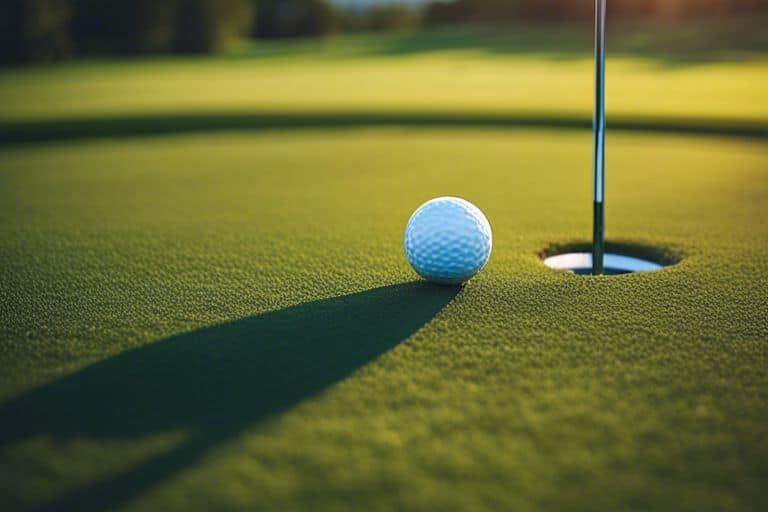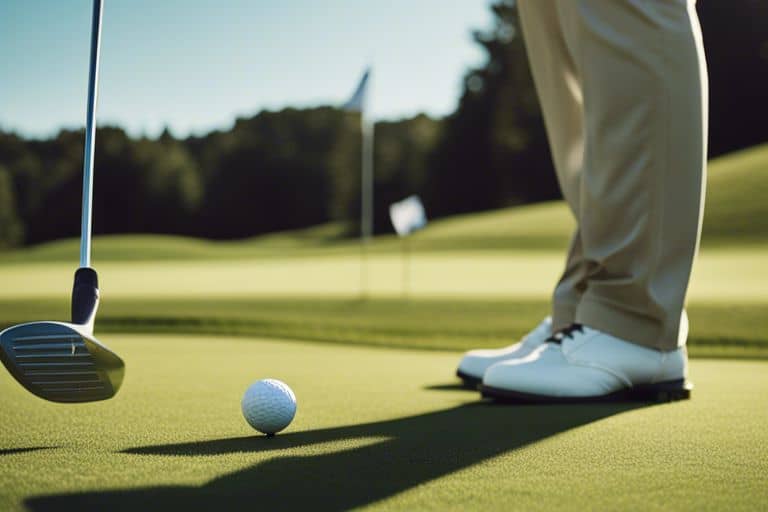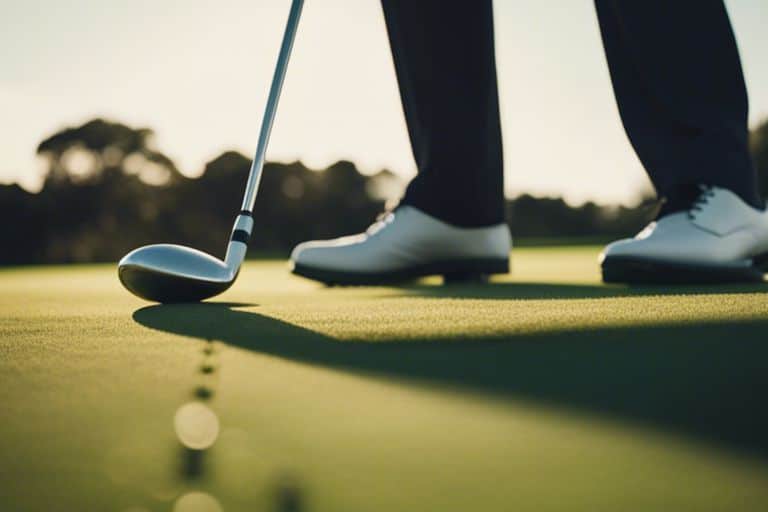What does it mean to be "on the green" in golf?
Perplexed by the term “on the green” in golf? Allow me to elucidate. When I have the pleasure of being “on the green,” it means that I have successfully reached the putting surface in the regulation number of strokes. This is a moment to be celebrated, as it puts me in an advantageous position to complete the hole. However, it is paramount to remember that simply being on the green does not guarantee success.
There are a myriad of factors that come into play, such as the speed and slope of the green, which can pose challenges to even the most seasoned golfer. Nevertheless, with a keen eye and steady hand, being “on the green” presents an exciting opportunity to make that crucial putt and potentially lower your score.
The Essentials of Golf Greens
By understanding the essentials of golf greens, you can improve your game and better appreciate the intricacies of the sport. Let’s take a closer look at the anatomy of a golf course and the types of greens you may encounter.
Anatomy of a Golf Course: Focusing on the Green
When it comes to the anatomy of a golf course, the green is the most important area. It is where the flagstick and the hole are located, and it is carefully manicured to provide a smooth and consistent putting surface. Surrounding the green, you may find hazards such as bunkers and rough that add to the challenge of approaching and putting. Understanding the layout and contours of the green is crucial for reading putts and executing precision shots.
Types of Greens and Their Characteristics
There are various types of greens found on golf courses, each with its own characteristics that can significantly impact your game. Some common types include bentgrass, Bermuda grass, poa annua, and tifEagle. Each of these green types has unique features affecting their speed, firmness, and maintenance requirements. Recognizing the type of green you are playing on can help you adjust your strategy and club selection accordingly.
- Bentgrass: Known for its fine texture and smooth putting surface
- Bermuda grass: Tends to be more resilient and is commonly found in warmer climates
- Poa annua: Prone to develop bumpy surfaces and is commonly found in cooler climates
- TifEagle: Resilient to foot traffic and offers a fast, consistent ball roll

Strategies for Reaching the Green
Obviously, reaching the green in golf is a crucial part of the game, and there are several strategies that can help you achieve this goal. From club selection to reading the terrain and weather conditions, taking a strategic approach to reaching the green can make a significant difference in your game.
Club Selection for Optimal Approach
When it comes to club selection for your approach shot, it’s important to consider the distance to the green, as well as any potential hazards in your way. I always recommend using a club that will allow you to reach the green without overcompensating for the distance. This might mean using a different club than you initially thought, but it’s important to choose the right one for the situation. This will give you a better chance of landing on the green and setting yourself up for a good putting opportunity.
Reading the Terrain and Weather Conditions
Before making your approach shot, it’s crucial to take into account the terrain and weather conditions. Pay attention to any slopes or undulations on the green, as they can affect the roll of the ball once it lands. Additionally, consider the impact of any wind or weather conditions on the flight of your ball. Adjust your approach strategy accordingly, taking into account these factors to ensure your shot lands on the green in the most optimal position.

Putting and Green Etiquette
To be “on the green” in golf means that your ball has reached the putting surface of the hole after your approach shot. The green is a critical part of the game, and mastering the art of putting as well as understanding green etiquette is essential to improving your performance on the course.
Mastering the Art of Putting
Putting is often considered the most crucial aspect of the game. It is where you have the opportunity to make or break your score. When it comes to putting, consistency is key. Practice different putting techniques and find the one that works best for you. Remember to keep your head still and maintain a smooth stroke to improve your accuracy and precision. Lastly, never underestimate the power of practice. Spend time on the putting green to hone your skills and gain confidence in your putting abilities.
Rules of Conduct on the Green
When on the green, there are certain rules of etiquette that every golfer should adhere to. One of the most critical aspects of green etiquette is to repair any divots or ball marks on the green to ensure a smooth putting surface for other players. Additionally, it is crucial to avoid stepping on another player’s putting line as it can affect the path of their putt. Always be mindful of your movements and their potential impact on the green. Lastly, be respectful of your fellow players by not talking or moving while they are addressing their ball or making a putt.

Understanding What it Means to be “On the Green” in Golf
With these considerations in mind, being “on the green” in golf means that your ball has successfully landed on the putting surface, thus allowing you to use your putter to attempt to sink the ball into the hole. This is a critical moment in a golfer’s game as it presents a significant opportunity to score well.
The ability to accurately read the green, judge the speed and slope, and execute a successful putt is essential for achieving a low score. Understanding this concept is crucial for any golfer looking to improve their game and lower their handicap.






